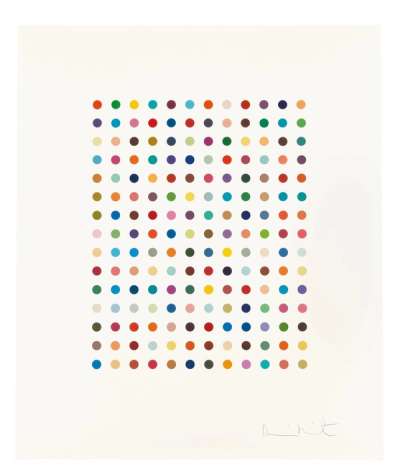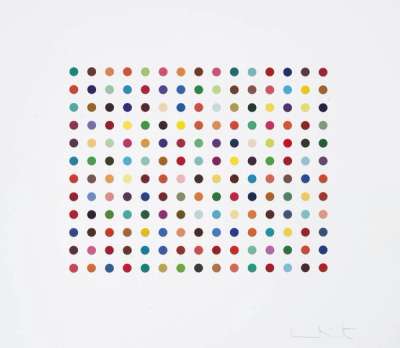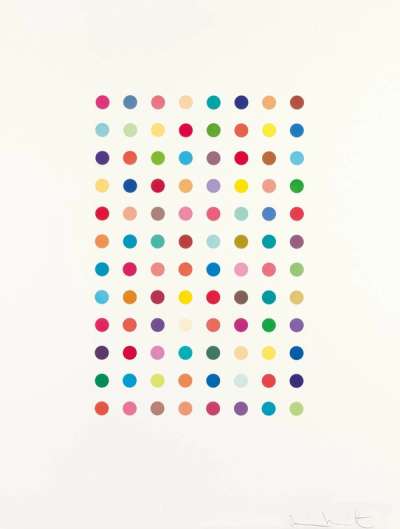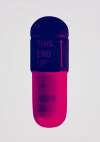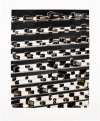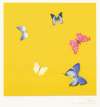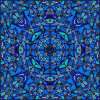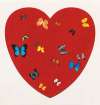Bromphenol
Blue and Xylene Cyanol Dye Solution; Pyronin Y and Ethidium Bromide Aqueous Solution
Damien Hirst’s Bromphenol Blue, Xylene Cyanol Dye Solution, Pyronin Y, and Ethidium Bromide Aqueous Solution prints are four 2005 etchings. The absurd pairing of complex chemical compound titles with Hirst’s simplistic spot motif interrogates both the machinations of pharmaceuticals and the possibilities of colour composition.
Damien Hirst Bromphenol Blue and Xylene Cyanol Dye Solution; Pyronin Y and Ethidium Bromide Aqueous Solution For sale
Bromphenol Blue and Xylene Cyanol Dye Solution; Pyronin Y and Ethidium Bromide Aqueous Solution Value (5 Years)
With £72909 in the past 12 months, Damien Hirst's Bromphenol Blue and Xylene Cyanol Dye Solution; Pyronin Y and Ethidium Bromide Aqueous Solution series is one of the most actively traded in the market. Prices have varied significantly – from £3896 to £25000 – driven by fluctuations in factors like condition, provenance, and market timing. Over the past 12 months, the average selling price was £12151, with an average annual growth rate of 1.9% across the series.
Bromphenol Blue and Xylene Cyanol Dye Solution; Pyronin Y and Ethidium Bromide Aqueous Solution Market value
Auction Results
| Artwork | Auction Date | Auction House | Return to Seller | Hammer Price | Buyer Paid |
|---|---|---|---|---|---|
 Bromphenol Blue Damien Hirst Signed Print | 26 Oct 2025 | SBI Art Auction | £8,075 | £9,500 | £11,500 |
 Xylene Cyanol Dye Solution Damien Hirst Signed Print | 24 Oct 2025 | Christie's New York | £8,500 | £10,000 | £13,500 |
 Ethidium Bromide Aqueous Solution Damien Hirst Signed Print | 19 Feb 2025 | K Auctions | £7,225 | £8,500 | £9,500 |
 Pyronin Y Damien Hirst Signed Print | 28 Oct 2023 | Christie's New York | £5,100 | £6,000 | £8,500 |
Sell Your Art
with Us
with Us
Join Our Network of Collectors. Buy, Sell and Track Demand
Meaning & Analysis
Hirst’s Bromphenol Blue and Xylene Cyanol Dye Solution; Pyronin Y and Ethidium Bromide Aqueous Solution prints play into his pharmaceutical theme. The series is representative of some of Hirst’s most iconic works to his name, the spot paintings. The spot paintings show rows of spots in a grid-like formula, each spot a different colour, and are an exploration of colour and form that is distinctly Hirstian. These works represent abstraction reduced to its most basic mechanisms: colour, form and composition.
Discussing the spot paintings more broadly, Hirst has explained, “I believe all painting and art should be uplifting for the viewer. I love colour. I feel it inside me. It gives me a buzz.” Deceptively simple and joyous, Bromphenol Blue and Xylene Cyanol Dye Solution; Pyronin Y and Ethidium Bromide Aqueous Solution recall the absurdity of Dadaism and gently mocks the processes of pointillist painting. The crisp edges and formulaic composition of each print convey a lack of human touch, despite the fact that these works are laborious and painting to produce. For many of the spot paintings throughout his career, Hirst employed assistants to produce them.
Each composition is a tight knit mesh of spots set against a plain white backdrop, the bright and round coloured spots bright and buzzing. The colour and arrangement appear to be seemingly random and with infinite possibilities in their display. The cold repetition and sterile aesthetic of these prints are reminiscent of Hirst’s early pill cabinet works such as The Void from 2000. Both The Void and this set of prints evoke a sense of endless sameness and directly allude to the realms of medicine and science. Indeed, the chemical name of each print in this series evokes a nondescript powder or pill that is abstract in its scientific mode. Fascinated by intuitive colour choice from his days at Goldsmiths, Hirst claims that the spot paintings have removed any problems he previously had with colour, allowing him to present a perfect arrangement of colour that is never repeated.
